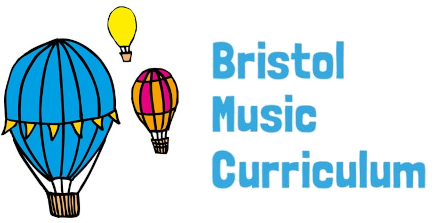Key Learning Objective: To read and perform a four bar notated rhythm. Starter activity: Pupils select favourite warm up song to focus their voices, bodies and brains. Main activity: Using a selection of untuned percussion instruments, children chant the animal rhythms and then play on their instruments, reinforcing a four-bar rhythm. Plenary: Revisit ‘Zebra Crossing’, incorporating a game […]
Category: Unit 2
Year 1, Unit 2: Animal Rhythms – Lesson 5
Key Learning Objectives: To compose and perform a four beat rhythm. To use this as a rhythmic ostinato. Starter activity: Revision of the song, ‘Tony Chestnut.’ Main activity: Revision of the rhythm picture cards, followed by revision of the term ‘ostinato’ and the creation of a four-bar rhythm using the animal pictures. Plenary: Revisit ‘This Train is […]
Year 1, Unit 2: Animal Rhythms – Lesson 4
Key Learning Objective: To compose, perform and maintain a rhythmic ostinato. Starter activity: Learn the song ‘Tony Chestnut’ before revisiting two earlier songs as extended exercises. Main activity: Introduction to additional notation, using new animal rhythms. For example, demonstrating four semi-quavers as ‘alligator’. Plenary: Learn the song ‘This Train’, furthered through addition of instruments playing the animal […]
Year 1, Unit 2: Animal Rhythms – Lesson 3
Key Learning Objectives: To identify the difference between pulse and rhythm. To recognise, play and compose simple rhythm patterns with the aid of animal note value cards. Starter activity: Listening and response exercise using the chant ‘H.E.L.L.O.’ Main activity: Creation of an individual rhythmic pattern, based on syllables found in the words ‘frog’ and ‘monkey’. Plenary: Listening […]
Year 1, Unit 2: Animal Rhythms – Lesson 2
Key Learning Objectives: To feel and internalise the pulse/beat. To identify the strong beat and demonstrate with an action/clapping. Starter activity: Warm up and Stomp Cannon, warming up voices, brains and bodies with an interactive chant. Main activity: Reminder of the concept of a pulse/beat. Plenary: Listening and response activity using the chant, ‘Say Boom Chicka Boom’, […]
Year 1, Unit 2: Animal Rhythms – Lesson 1
Key Learning Objectives: To feel and internalise the pulse/beat. To identify the strong beat and demonstrate with an action/clapping. Starter activity: Warm up and Stomp Cannon, warming up; voices, brains and bodies with an interactive chant. Main activity: Introduction to the concept of a pulse/beat. Plenary: Listening exercise using the focus song ‘This Train’, identifying a pulse and […]
Reception, Unit 2: Pitch – Lesson 6
Early Learning Goals: To sing and play intervals as part of a song. To play a melodic ostinato on the strong beats of the bar. Starter activity: Warm up exercises, focusing on posture and controlled breathing. Main focus: Introduce the second part of ‘The River’ and learn the second part of ‘Mother Earth Carry Me’. Plenary: […]
Reception, Unit 2: Pitch – Lesson 5
Early Learning Goals: To use graphic notation to illustrate pitch. To describe the features of a Native American Indian music. To use voices expressively and creatively to sing songs and chants. Starter activity: Breathing exercise focusing on isolating diaphragm movement, followed by a vocal warm up using the song ‘Dr Knickerbocker’. Main focus: Sing […]
Reception, Unit 2: Pitch – Lesson 4
Early Learning Goal: To recognise that music is notated to show both pitch and duration. Starter activity: Three individual aural exercises that kinaesthetically reinforce the concept of high and low notes to the pupils. Main focus: Listen to ‘Abeeyo’ and introduce ‘callers’ and ‘responders’, focusing on varying dynamics and ‘body pitching’ the sounds. Plenary: Listen […]
Reception, Unit 2: Pitch – Lesson 3
Early Learning Goals: To discriminate between changes in pitch, recognising high, middle and low sounds. To use the voice to copy a simple melodic pattern. To play a simple melodic pattern on an instrument. Starter activity: Warm up/breathing exercise, followed by a performance of ‘Row, row, row the boat’ as a round in two parts. […]
